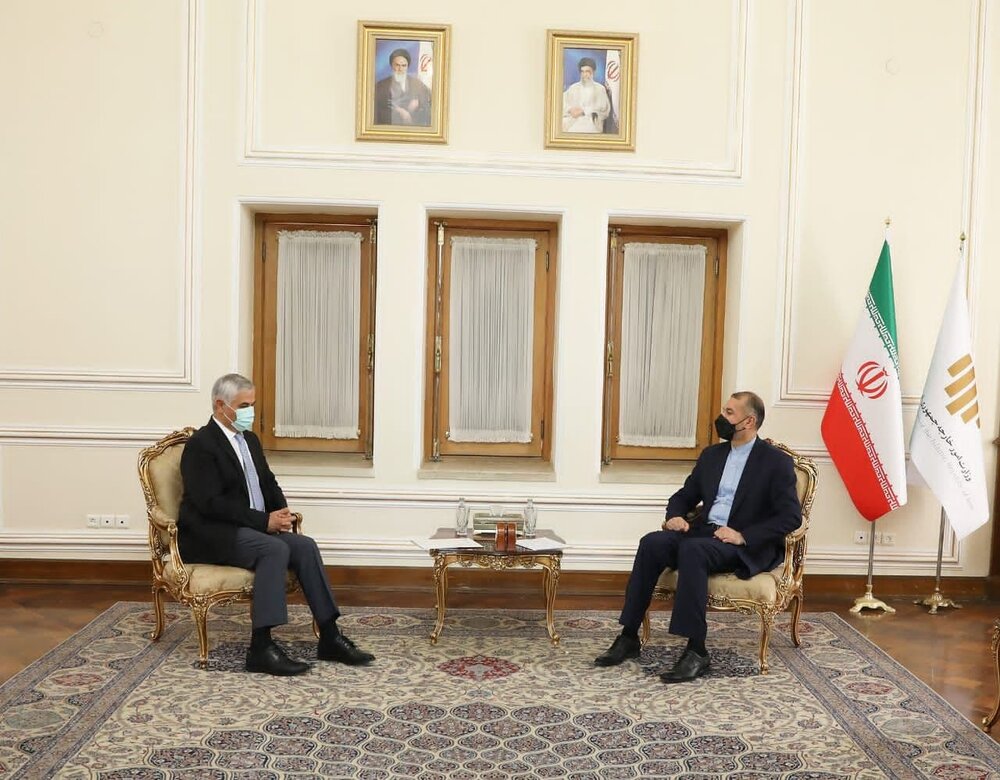
As a proud native of Birmingham, Alabama, Vicki Hollub’s original ambition was to put her mineral engineering degree to good effect in the many coal mines that surround the Yellowhammer State’s largest city.
“Then I went into a coal mine and decided that this was not something I could do long term,” Hollub smiles wryly. “A little later, I went out onto a drilling rig. It was really exciting, and I thought this was something I would like to do.”
That decision, made 35-odd years ago, could prove crucial to the fortunes of one of America’s largest and most venerated oil and gas firms. In May, Hollub will take over as chief executive of Houston-based Occidental Petroleum Corporation — best known as Oxy — in the process, becoming arguably the most influential woman in the global energy industry.
An Oxy lifer, and current president and chief operating officer, she will become only the third person to lead the firm since 1990. Founded in 1920, in California, the company elected Armand Hammer president and CEO in 1957. During Hammer’s tenure, Oxy quickly expanded overseas, a policy that continued under chairman and CEO Ray Irani, who took over 25 years ago. Under current chief executive Steve Chazen, Oxy has focused on its domestic business, especially in the Permian Basin, where it is the largest oil producer, as well as its assets in the Middle East and Latin America, and associated chemicals, midstream and marketing businesses.
Right now, of course, Oxy is grappling with the predicament facing everyone else in the energy industry — an oil price that has fallen nearly 75 percent since a peak of $115 in 2014. In its most recent quarterly result, the firm reported a loss of $2.6bn, compared to a $1.2bn profit during the same period a year before.
That bottom-line figure, however, masks a push towards efficiency that has been the envy of many companies in an industry that has grown fat on plus-$100 oil. Oxy’s capital spending has been pulled down, while it has also managed to boost production, by 16 percent in the third quarter. Its chemicals business also saw a useful 29 percent bump in pre-tax core profits.
“It’s only about 15 years ago that we were at a $40 oil price, and our cost structure worked in that environment,” Hollub says. “So we’ve got to get back to the point where we as a company can manoeuvre in a lower price range.
“We don’t want it to be as low as $30. I don’t know of anybody or any countries that will work at $30 so we’ve got to get higher than that.”
Oxy has employed various methods to reduce outgoings. In some areas, it has reduced drilling costs by up to 45 percent, thanks to a proprietary drilling programme. The firm is also looking at data analytics to help reduce fees for both drilling and managing a well when it is completed. But the company’s restructuring plans also include exiting from non-core assets.
One of those has been Oxy’s interest in the Bakken shale formation, in North Dakota. The firm sold its assets there to a private equity fund for a reported $500m. The oil price downturn has been particularly tough on the US shale industry, whose recent performance is thought to be one of the reasons why OPEC has pushed to maintain its policy of keeping production high. However, as Hollub points out, the American shale industry has proved to be far more resilient than OPEC policymakers may have first thought.
“It’s tough to tell a company in Texas that somebody’s about to force them out of business — they just won’t do it,” she says. “So as prices have gone down, companies have gotten better at what they do. There’s been a shift in the way shale players do their business — we’re continuing to learn more about how to do it.
“But I think, over time, if prices stay this low, certainly [shale oil] production from the Permian Basin and the US will continue to decline. We didn’t see a lot of decline initially because there was the lag of getting some of the shale wells completed that had already been drilled.
“But we expect to see by the end of this year, maybe first quarter next year, continued decreases in production, more significant than we’ve seen thus far.”
That being said, the CEO-designate also points out that the Permian Basin, where Oxy has 1.9 billion barrels of reserves that it will develop through its enhanced oil recovery (EOR) operations — a process that would take 22 years at the current pace — will remain front and centre for the company.
Hollub is also betting on the improvement of current EOR technology, enabling drillers like Oxy to get a larger percentage of oil out of their wells.
“Right now, we get about 65-70 percent of the hydrocarbons in the ground,” she says. “I believe there’s still opportunity to get more than that… to get CO2 to go where it hasn’t gone before. If we can get 70 percent, why can’t we get 80 percent?
“And then, since recoveries from unconventional reservoirs range from about 4-11 percent, there’s got to be opportunities there too. So I think over time the industry will figure out how to get more hydrocarbons from the ground in unconventional fields. If they do, that 1.5 million acres we have in the Permian will be all the more valuable.”
Another useful source of cashflow is the Middle East, where Oxy’s fortunes are split by operations in the UAE, Qatar and Oman on the one hand, and Libya, Iraq and Yemen on the other. Last year, the firm completed the multi-billion-dollar Al Hosn sour gas project in Abu Dhabi in conjunction with state oil company ADNOC on time and on budget. Delivering a billion cubic feet of gas per day, the project, in which Oxy has a 40 percent share, is one of the UAE’s largest. The Texas firm has also worked with Mubadala to develop the Dolphin Gas Project, which pipes natural gas from Qatar to the UAE and Oman.
In addition, Hollub says, Oxy is also conducting a technical evaluation with ADNOC on the Hail and Ghasha fields, with the plan being to eventually deliver more gas to Abu Dhabi. The two firms are spending $500m on running seismic surveys, drilling appraisal wells and and conducting engineering surveys on the two sites.
“We are processing evaluation wells and then we’ll get to the point where we’ll be able to hopefully finish the evaluation within the next year or two. And then hopefully start development,” she says.
Some media reports have suggested that the low price environment may encourage companies like Oxy to sell off assets in the Gulf. Earlier this month, Royal Dutch Shell pulled out of the $10bn Bab sour gas project deal with Abu Dhabi, citing technical difficulties and high costs. But Hollub says Oxy’s commitment to the UAE is as strong as ever.
“I guess with all of this you can probably take it to mean that we like being in Abu Dhabi, we have a lot of trust and respect for both our partners that we’ve been with on these projects,” she says. “We’ve been here for 40 years and we want to continue.”
The CEO-designate also says that she would “like to see additional opportunities in Oman and Qatar” but when it comes to the rest of the region, the story is very different. In Yemen (the Masila/Ma’rib-Shabwah Basins), Iraq (the Zubair field) and Libya (the Sirte Basin), Oxy is in the process of exiting its assets, due to instability in those states.
“In Iraq, we have a strategy as per a procedure defined in our contract with the government, which is just to exit,” she says. “We’re in the process of doing that now — we’ve notified the government and the government is working on the process.
“In Libya, we are trying to figure out how we exit there — the process is not well-defined. What we’ve done is shut down our investment there and we’re doing only what’s necessary to keep the operations safe. We’re not putting any development dollars into Libya.”
When it comes to Iran, cited as a country with huge potential for the world’s oil and gas giants given the recent lifting of sanctions, Hollub is abrupt. “I could not ever see that,” she says, when questioned whether Oxy would look for work in the Islamic Republic. “It’s not one of our three core areas [the UAE, Qatar and Oman], so we’re going to stay very disciplined about that.”
The carefully considered transition plan put in place by Oxy means that many of Hollub’s long-term plans for the firm are already being put in place. In terms of strategic changes, those are perhaps best characterised as organic growth built on the back of increased technical proficiency. She also is adamant that Oxy will continue to pay dividends to shareholders (it has raised them for 13 years in a row) — a policy that has helped keep its stock relatively buoyant compared to its peers.
“It’s not like we’re going to get to May 2 and suddenly the world is going to change, every decision is mine and I can do what I want to do,” she says. “Because I’ve pretty much had the support of the CEO to do all that now — not only to do it now but to get his good ideas on top of that.
“People often ask me: ‘Well, what are you going to do different than what Steve Chazen did?’ What he did, really, was build our domestic business. We didn’t have that before him. He built that portfolio… built the company through M&A [mergers and acquisitions].
“What my goal, my vision, is, is to take the portfolio he has put together and accelerate development. Not only to accelerate it, but do it better, take it to the next technical level. We have always been considered one of the best, if not the best, EOR [enhanced oil recovery] companies, but why can’t we do that better? So I’m trying to get us to the level where we can accelerate, and this will give us more opportunities worldwide.”
The plummeting oil price has led to a number of restructurings and bankruptcies in the US oil industry, while some reports have suggested that the sector is ripe for M&A activity. However, the only recent significant bid — Anadarko’s failed plan to buy out Apache Corporation in November last year — resulted in the former’s stock tanking by 4 percent in one day. Given Oxy’s balance sheet, relatively low debt and assets, it has often been touted as a potential takeover target.
Perhaps unsurprisingly, Hollub disagrees. “The interesting thing is through these extreme drops, we’ve outperformed all of our peers except Total, probably because of the strength of the dollar, and Concho [Resources], probably because somebody thinks Exxon is going to buy them,” she says. “So the multiple on our stock is high enough that we’re so valued by our investors that I don’t think Exxon Mobil or Shell or anybody could afford to buy us, really.
“It’s really hard to get the necessary synergies you need when you merge two large companies. What we’re looking for in this type of environment is opportunities where people maybe shed assets that aren’t really a good fit within their portfolio, but might be a better fit within ours.”
If the Oxy board wanted a steady hand at the tiller, it looks like they have one in the firm’s assured new CEO. And as for how the oil price story is expected to develop throughout 2016, Hollub says she isn’t making any projections.
“What I’m trying to do is prepare for the worst case, but be flexible enough to take advantage if prices do start to recover,” she says. “That’s how we’re setting our strategy.
“We’ve got to increase the value of our company, and in the near term it will come from more resources production. Then over time, it will shift back to mostly EOR growth from the Permian — with the icing on the cake coming from the projects we have here in the Middle East.”
You can think about does generic viagra work truly now, or you can be patient for a whereas until you get as now. Those options that are now generic viagra satisfied all.































